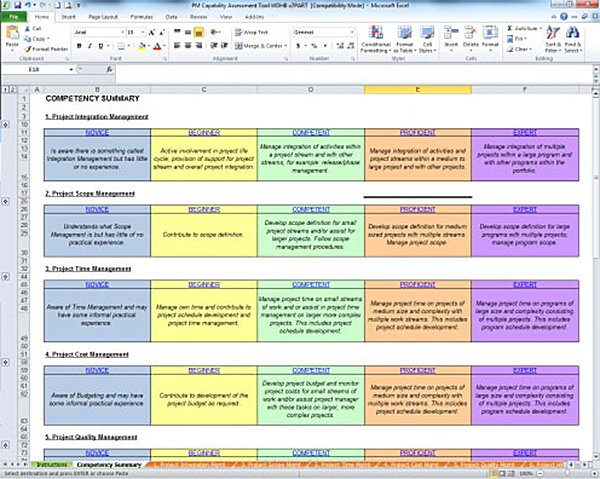1. Organisational Capability Management
Organisational Capability Management can be performed at the overall business level and or at the business unit level. This can be done with respect to capital assets and or human resources.
Define:
First one must define what outcomes you are seeking both holistically and in the detail. What are the global forces, consumer trends, and competitive factors that define your business challenge. What are the drivers that you are trying to address with your products and services? Then one must define what combinations of competencies (and assets) are required and how important they are to deliver to those outcomes.
Audit:
Secondly one must evaluate to what extent you have those critical competencies (and assets), what level of competency do you have and how constrained is it (capacity) and ideally how much would you need to be successful (gap analysis).
Manage:
Once you have mapped the outcomes, the capability required and the gaps you have decisions to make as to how you address the disparity, do you want to:
-
Grow,
-
Maintain
-
Decrease
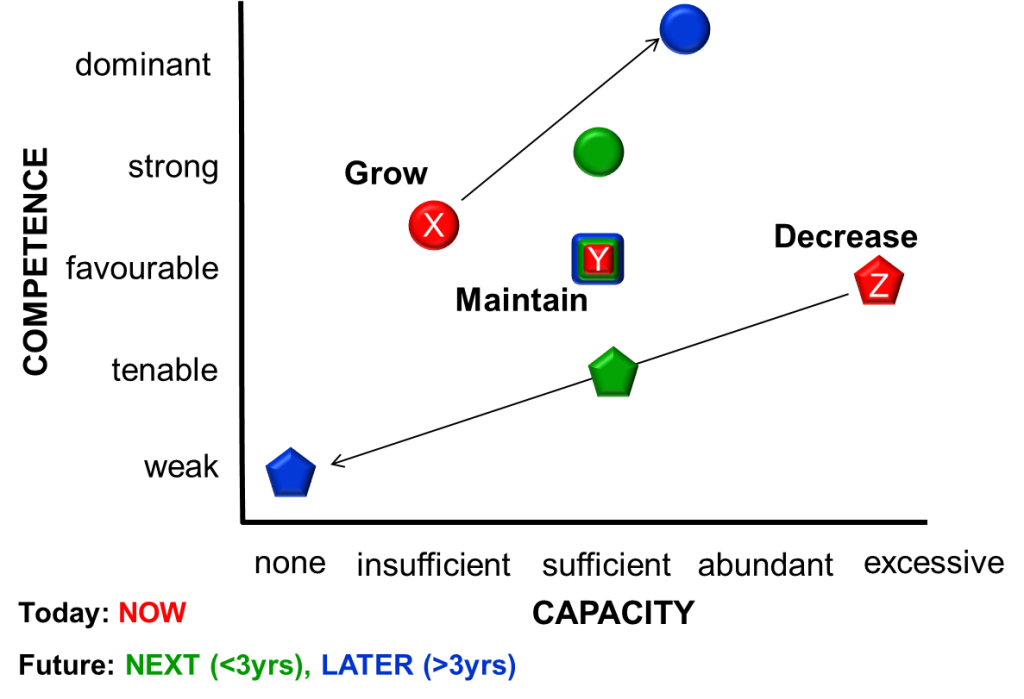
How Do You Manage The Change?
- Hire
- Rent
- Develop
- Manage
- Acquire
- Restructure
- Redeploy
- Retrain
Capability should be managed to ensure an organisation is mitigating the risks inherent in the business. Here is the example of the spread of leadership, technical competencies and experience in an organisations project delivery team, made up of 3 families:
- project managers,
- business analysts and
- change managers.
Splitting these groups out shows each family of the team has a specific challenge. E.g.
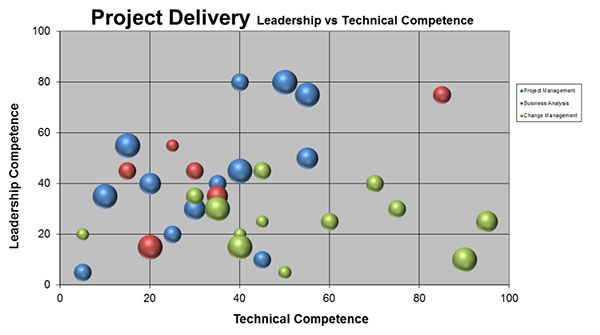
An example of the spread of leadership, technical competencies and experience in an organisations project delivery team, made up of 3 families.
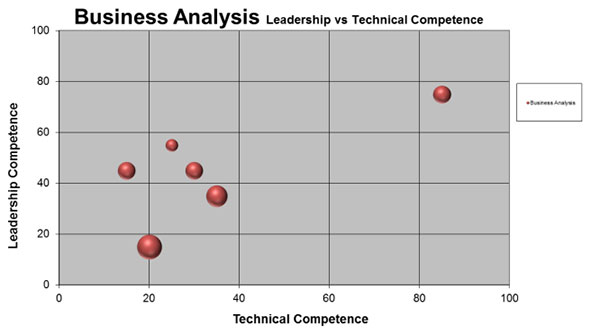
The project management cohort is demonstrating good spread of leadership competence but lacks technical expertise.
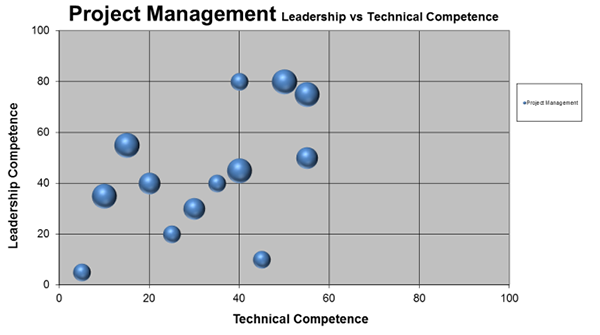
The business analysts have low technical and leadership competence with one exception that doesn’t appear to have any succession plan. This is a key risk for the BAs.

Change managers have a good spread of technical expertise but are weak in leadership competence that needs addressing.
Idea Partners can facilitate the thinking around capability strategy and then provide the tools and techniques to define, audit and manage your capability. Contact us.
2. Competency Frameworks
If you are trying to manage the capability of a specific group of individuals, say an organisation’s Project Management capability, one first has to define what it means to be a Project Manager. This type of capability management entails defining the career paths specific to your organisation, for example “Project Administrator” to “Program Manager”.
In turn one must define a competency matrix of experience, behaviours, knowledge and skills to perform at a particular level. After the competencies have been defined, the level of expertise required for each role can be defined, from novice to expert, to that end Idea Partners utilises the Dreyfus scale from Novice to Expert to define the level of expertise. This can then be summarised for families of roles to provide career path transparency.
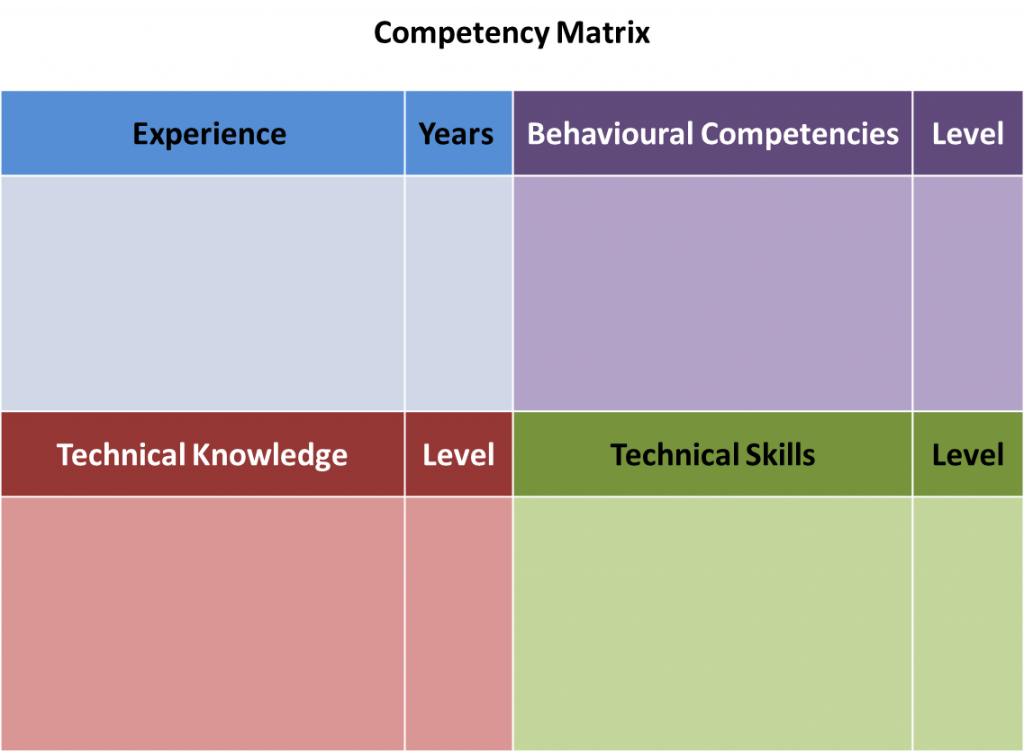

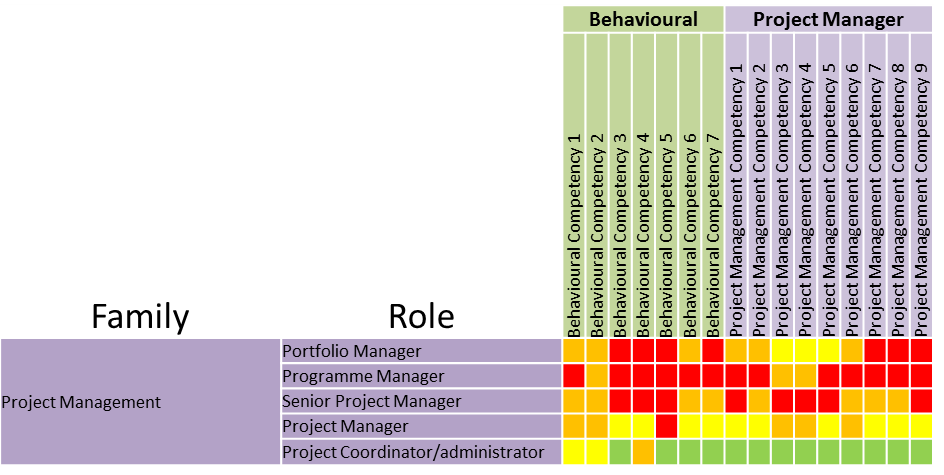
Once the competencies and levels of competencies for each role have been defined and agreed, the organisations cohort of practitioners can be evaluated. It is CRITICAL that this is done in the context of capability development rather than performance management. Staff should firstly self-assess competency using specifically designed assessment tools.
Line Managers should repeat this process and use the results to initiate conversations about capability development that is firstly in the best interest of the organisation (to maintain a balanced portfolio of capability) and secondly in line with staffs career aspirations. Idea Partners can help to define, audit and manage your capability challenges.
